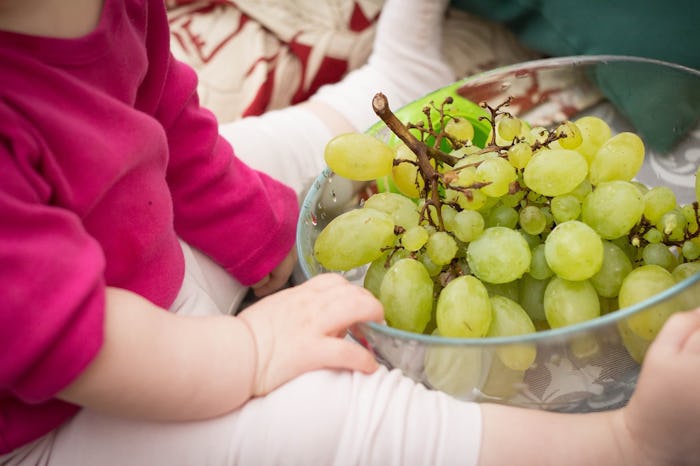When you think about lead poisoning, most parents’ minds leap to crumbling and peeling paint in older homes or contaminated pipes and faucets in deteriorating buildings that can affect drinking water. While those are some of the biggest sources of lead exposure, a new report has also found detectable levels of the toxic metal in some types of baby food. These findings are certainly concerning as it could lead to serious health conditions, especially in younger children. But before you toss out everything in your pantry, here’s how to tell if there’s lead in your baby food.
According to the report, which was published by the Environmental Defense Fund on Thursday, lead was detected in 20 percent of the 2,164 baby food samples and 14 percent of another 10,064 food samples the group studied. Researchers came to these findings after looking at data that spanned over a decade from 2003 to 2013 as a part of the Food and Drug Administration's Total Diet Study, an ongoing program that monitors levels of contaminants and nutrients found in food in the United States.
While there's no information about which brands were involved in the analysis, here's a breakdown of the types of baby food the EDF found where lead was most common:
- Fruit juices: Grape (89 percent of 44 samples), mixed fruit (67 percent of 111 samples), apple (55 percent of 44 samples, and pear (45 percent of 44 samples).
- Root vegetables: Sweet potatoes (86 percent of 44 samples) and carrots (43 percent of 44 samples)
- Cookies: Arrowroot cookies (64 percent of 44 samples) and teething biscuits (47 percent of 43 samples).
Below is a closer look at the FDA's findings of lead and cadmium, another toxic metal, found in baby food:
"We don’t know precisely where the lead in food is coming from," Maricel Maffini, a consultant for EDF, said in a press release. "Contaminated soil is one likely option. However, we don’t know why lead was more frequently detected in baby foods than the regular versions.
He continued, "The fact that 55 percent of baby food apple juice samples have detectable levels of lead compared to 25 percent for regular apple juice deserves more examination.”
While the source of the lead remains unknown right now, the researchers noted that possible sources could come from absorption through contaminated soil, incidentally while processing and packaging, or while en route to the supermarket.
According to the FDA, lead "cannot simply be removed from food" as it's in the environment, but it sets allowable limits to ensure safety. For example, bottled water has a 5 parts per billion limit and has set a maximum daily lead intake of 6 micrograms. However, for small children, the allowable amounts are much smaller.
The report urges companies to set a goal of less than 1 parts per billion of lead in baby food and to test their products more frequently to ensure that no additional amounts of lead get into the food.
Children who are exposed to lead can experience behavioral problems, develop lower IQs, and studies have found that the "damage can be irreversible," according to The Washington Post. While these findings are certainly startling for many parents, doctors don't think they should worry too much about eliminating these foods from their child's diet entirely.
"I certainly would not recommend avoiding entire food groups because of a concern about lead exposure," Dr. Aparna Bole told NBC affiliate WCBD News 2. "Root vegetables are a really healthy choice for babies."
Because the source of lead contamination is still unknown, parents who feed their children some of the most heavily-affected foods can try making their own baby food in a blender with local produce, or speak with their doctors about healthy alternatives to try out until public health officials are able to determine the source of exposure.
